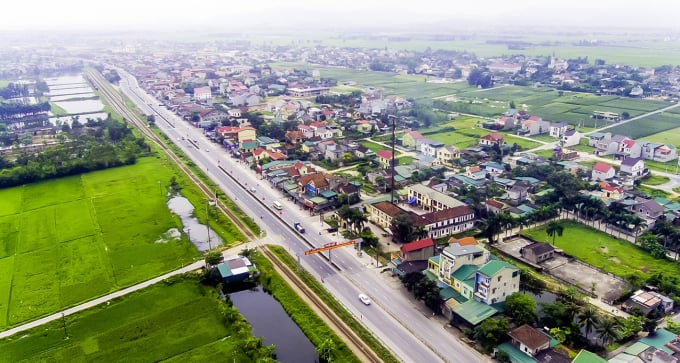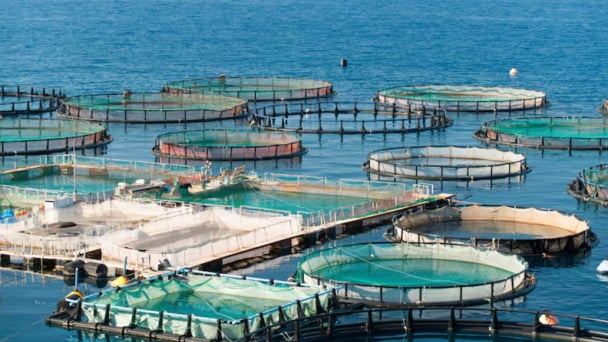June 3, 2025 | 12:42 GMT +7
June 3, 2025 | 12:42 GMT +7
Hotline: 0913.378.918
June 3, 2025 | 12:42 GMT +7
Hotline: 0913.378.918

Dr. Nguyen Hong Thuc, Institute of Settlement and Sustainable Energy Research.
There are three paradoxes in the urbanization process in Vietnam.
Firstly, urbanization preceded industrialization: Before the development of the first modern cities in England there were 80 years of industrialization, 50 years in the case of America, and 30 years for the Asian Dragons.
In Vietnam, the process is opposite. Urban population growth is mainly mechanical. The wave of rural - urban migration is increasing faster than the development rate of industry and service.
The demand for urban settlement therefore increases. The explosion of a new urban system taking place, on one hand, both reduces pressure on people's accommodation and brings huge profits to the real estate business. On the other hand, as the new urban areas only develop commercial housing, the burden regarding laborers and untrained workers is for the shabby inns to bear, not to mention the neglected civil works and social infrastructure.
The matter of industrialization is spreading in agricultural areas, changing the lifestyle and housing of the countryside. The phenomenon of new rural settlement model is becoming more urgent as time goes by.
Secondly, the technical infrastructure is lacking and falls behind urbanization: According to a recent survey, the construction land for technical infrastructure of many urban areas in Vietnam is only approximately 10-15% of urban land at the moment, while the minimum requirement is 30-35%.
Thirdly, the annexation of peripheral land and agricultural belts: The Vietnam Urban Development Strategy in 1996 outlined a master plan for urban land to be 460,000 ha by 2020, but by 2006 the actual figure had reached 477,000 ha, exceeding the plan for 13 years. There are no more quotas regarding agricultural land converted to urban areas at present, thus the phenomenon of urban - rural connection is of great urgency.
From the urbanization standpoint, it can be concluded that these phenomenons are having a significant impact on the organizing of urban - rural space.
Strong urbanization in rural areas equals to decline in rural areas far from the city. The migration process from rural to urban areas has left behind desolate villages with an imbalance in population imbalance. People of working age leave their homeland in search of new opportunities. This situation can be avoided with strong urban-rural connections.

Architecture lacking synchronicity in the countryside.
There is a common term: “the rich and the sleeping villages”, which indicates a phenomenon when houses in the countryside, especially in suburban villages, are acquired for speculative purposes or rental use. Indigenous people sell part of their land to increase their income the moment the price of land increases.
However, land fragmentation occurring in the countryside and affluent residential areas is not entirely beneficial in terms of society, culture and living space organization. Conflicts between indigenous people and newcomers arise due to differences in lifestyles and disparities between the rich and poor.
Land fragmentation also leads to diversity in village architecture. Any hope for a unified architectural form in villages is within the realm of miracles because of the vast diversity of needs from different settlement objects. Meanwhile self-construction method still exists which makes strict control of construction order seem impossible.
After the land for agricultural and production activities was replaced by new urban areas, the city has never been so dependent on rural areas.
Rural areas became the food supplier for the region's creative mind - the city. In contrast, rural areas depend on cities as the provider of higher-priced amenities and services. The city will cease to function if it is disconnected from the relationship with the surrounding countryside, and vice versa, the countryside will be weakened if it cannot rely on the service and innovation center like the city.
Thus the current situation requires not to separate industrialization from urbanization in rural areas and to bring together the two extremes - "industrialization" and "ruralization”, although in the economic history of Western Europe and considering its popularity on a worldwide scale, these two are still considered contrasting, if not unlinkable. but in the future rural industrialization can only succeed with the slogan "rural industrialization - inseparable from homeland”.
It is necessary to maintain the stability of "settlement" and "living conditions" among the rural attributes (can increase non-agricultural economic content) rather than the rural urbanization we still understand and apply in Vietnam today.
In essence, the traditional residential model in the countryside is closely linked with the living environment based on the basic farmers working in the fields, farms, and forests. But the trend of transitioning to industrial production and services in the modernization period has separated a large part of this model from the agricultural economic function that it inherently has to create a non-agricultural rural population.
These are the basis for researching and proposing residential and production land use standards as well as new rural adaptive models.
Translated by Samuel Pham

(VAN) Technology is redrawing the map of Vietnamese aquaculture: more modern, greener, and more sustainable.

(VAN) Novel process harnesses machine learning to reveal groups of genes that determine how efficiently plants use nitrogen.

(VAN) Several scientists and farmers are experimenting with soil treatment in some key durian-growing regions such as Cai Lay (Tien Giang), Dak Song, Gia Nghia, and Dak R’lap (Dak Nong).
/2025/05/25/4127-3-073637_820.jpg)
(VAN) Thanks to the promotion from an FAO-implemented project, vegetable production in greenhouses in Moc Chau has seen strong development, from 1.5 hectares in 2021 to nearly 50 hectares in 2024.

(VAN) FAO has recently supported USD 140,000 to implement the project 'Risk mitigation human-animal interface risks through disease control initiatives in pig farming.'

(VAN) The People's Committee of Tra Vinh province has approved an adjustment to the investment policy for the Green Hydrogen Plant project, increasing its area to approximately 52.76 hectares.
![Reducing emissions from rice fields: [2] Farmers’ commitment to the soil](https://t.ex-cdn.com/nongnghiepmoitruong.vn/608w/files/news/2025/05/05/dsc08881jpg-nongnghiep-140632.jpg)
(VAN) Clean rice cultivation model in Thuong Tan commune, Bac Tan Uyen district, is assisting local residents in achieving sustainable agriculture by substantially reducing costs, increasing productivity, and protecting the environment.